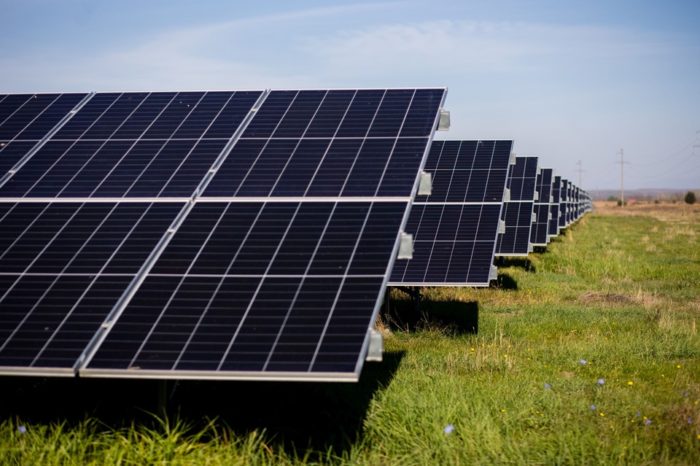Colliers: The number of homes sold last year in Bucharest was 11 percent higher than in 2021

2022 ended with an 11 percent increase in the number of apartment transactions in Bucharest, compared to the previous year, while the authorized area of residential projects increased by 21 percent, exceeding 2 million square meters, which is equivalent to more than 40,000 apartments, Colliers consultants estimate. For the rest of the country, demand on the residential market has fallen by 10 percent.
With prices continuing to grow significantly faster than incomes, amid rising building material costs and current economic conditions, Colliers consultants note an increasing interest among Romanians in rented housing, even if the desire to become homeowners remains high.
“If authorizations in Bucharest in the first half of the year had a very low rhythm, the second part of the year brought important increases. Basically, developers managed to authorize three quarters out of the more than 2 million square meters. But the record number of square meters approved does not mean that all these projects will be built because developers are in no hurry to start new construction sites due to high construction costs and falling demand. After a record number of homes delivered in 2022, this year will see fewer homes finished in Bucharest compared to last year. The number of started projects is decreasing, but the supply is adjusting much more gradually. After almost two years of disequilibrium, the residential market is going through a balancing period in which caution and attention to costs prevail, both on the part of buyers and developers”, points out Gabriel Blanita, Associate Director Valuation & Advisory Services at Colliers Romania.
For the rest of the country, the number of apartments sold in 2022 is down 10 percent from 2021, a trend also seen in the authorized area, which has fallen to 9.3 million square meters. Of the large cities, the most significant decreases in sales were recorded in Iasi (-21 percent) and Cluj-Napoca (-18 percent), where the authorized area for new residential projects also decreased by 7 percent and 6 percent, respectively, to around 520,000 square meters in Iasi and around 570,000 square meters in Cluj-Napoca, the most expensive city in the country. By contrast, in Brasov, after a good year for apartment transactions, only 3 percent below the record of 2021, there was a 9 percent increase in authorized areas compared to 2021, to around 380,000 square meters.
In the Ilfov region, apartment sales decreased by 5 percent and the authorized area by 7 percent to 1.3 million square meters, but even so, the Capital and Ilfov region generated 37 percent of apartment transactions in 2022 and 30 percent of the authorized area in residential projects nationally.
The divergent evolution between Bucharest and the rest of the country continues in 2023, with apartment sales in January this year recording a significant decrease in the major cities, except the capital. Nationally, Colliers consultants noted that there are 20 percent fewer transactions compared to the beginning of last year, and the rise in interest rates will result in a considerable slowdown for the residential market, with demand continuing to adjust at a faster speed than supply.
“In Bucharest, 2023 started similarly to the last two years in terms of the number of transactions. Even though the level of sales in January is half that of the last months of 2022, traditionally, most transactions take place in the spring and autumn, so month-to-month analysis of the data is not necessarily the most relevant. Quite the opposite is true for the rest of the country, where the first month of the year brought a 27 percent drop in sales. Timisoara and Cluj set the tone, with 47 percent and 46 percent decline respectively. In Iasi, the number of transactions dropped by 20 percent compared to January 2021. The decrease in housing affordability, especially in Cluj-Napoca, the increase in the cost of credits and the reduced supply of affordable housing were some of the factors behind this development”, Gabriel Blanita points out.
As new homes become less and less affordable for Romanians, Colliers consultants are seeing increased interest in renting. A recent survey conducted by Unlock Research for Colliers shows that 15 percent of Romanians aged 18-55 in cities live in rented homes, and among the 18-24 age group, the proportion of those renting is doubling. Nationally, the intention to buy a house in the next year remains high, with 44 percent of respondents wanting to do so by the end of the year. However, the number of those living in rented homes and planning to buy a home is down slightly from last year, when just over 50 percent wanted to take this step. In Bucharest, the intention to buy remains slightly above 50 percent, while in larger cities, it is around 35 percent.
“As the gap between mortgage rate and rent reduces amid rising market prices and tighter lending conditions, we see an increasing demand for rents. This demand has so far been met by small investors buying up packages of apartments and putting them on the rental market, but now it is starting to attract the attention of the big players. We are no longer talking in future tense about the development of the residential for rent segment, and the trend continues. In fact, we are in discussions with several developers and investors regarding the construction of rental developments in several areas of Bucharest, and we have recently brokered a land transaction for such a project, the development potential for this sector reaching around 5,000 units in Bucharest in the next 2-3 years”, concludes Gabriel Blanita, Associate Director Valuation & Advisory Services at Colliers Romania.














